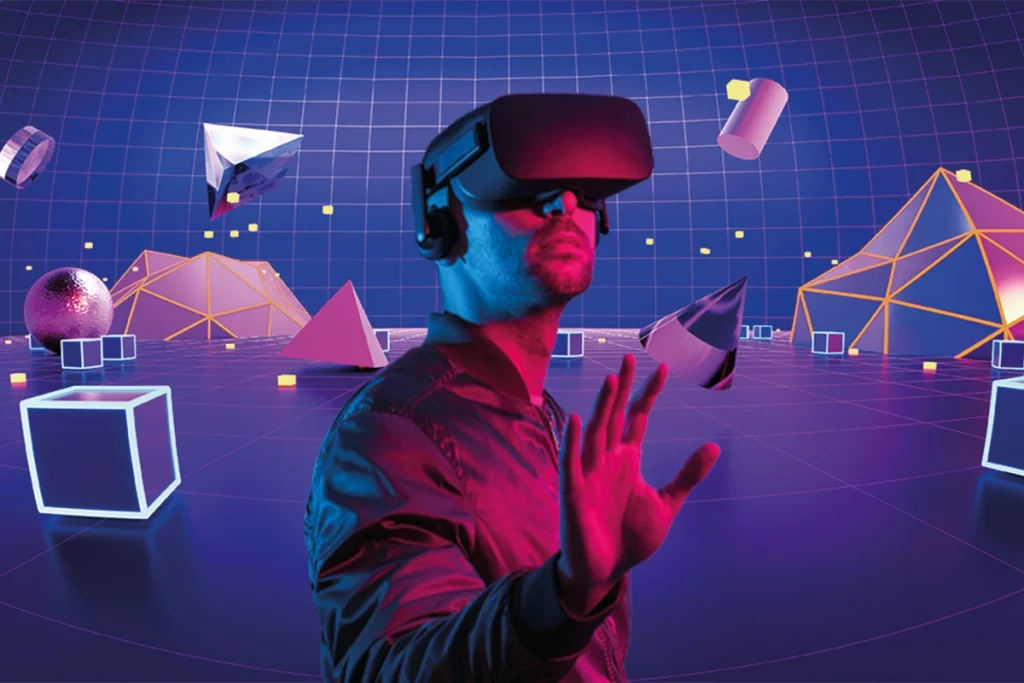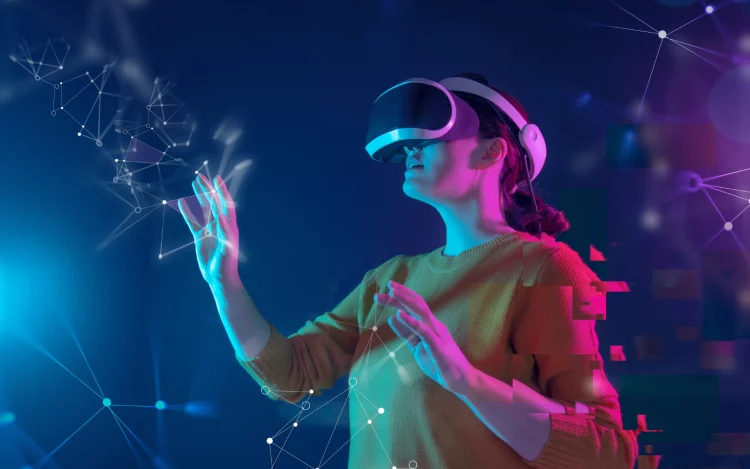Introduction
The term “metaverse” has evolved from science fiction to a tangible technological frontier. Over the past few years, we’ve seen an accelerating interest in creating immersive virtual environments where users can interact with digital assets, socialize, and engage in a broad range of activities. As augmented reality (AR), virtual reality (VR), blockchain, and other next-gen technologies evolve, the metaverse is gradually transforming from an idea into a robust, multifunctional platform with enormous potential.
This shift is not only driven by tech enthusiasts but also by corporations, gaming giants, and digital entrepreneurs who recognize the metaverse’s vast potential. From virtual shopping malls to digital real estate investments, the metaverse is reshaping the way businesses approach commerce, entertainment, social interaction, and even governance. This article explores why an increasing number of companies are developing metaverse platforms, the technologies behind them, and the broader implications for industries, society, and the future.
1. What is the Metaverse?
Before delving into why companies are so keen on building metaverse platforms, it’s important to define what the metaverse is. While various definitions exist, the metaverse generally refers to an interconnected network of 3D virtual environments where users can engage in activities such as gaming, socializing, shopping, or working. These environments are persistent, meaning they continue to exist and evolve even when users are not online.
The metaverse is often envisioned as a virtual universe that spans multiple platforms, much like the internet spans websites and apps. Key components that make up the metaverse include:
- Virtual Reality (VR): Immersive digital environments that users can interact with using headsets.
- Augmented Reality (AR): Enhancing the real world with digital elements, often through smartphones or AR glasses.
- Blockchain: Ensuring secure and decentralized ownership of digital assets, such as non-fungible tokens (NFTs), which can be used to own virtual real estate, art, and even in-game assets.
- Digital Economy: Virtual goods and services that can be bought, sold, or traded within the metaverse, potentially creating new revenue models for businesses.
2. The Role of Companies in Building the Metaverse
2.1 The Race to Build Immersive Experiences
As the metaverse begins to take shape, many companies, from tech giants to emerging startups, are focused on creating immersive virtual experiences. Their goal is to provide users with interactive, engaging, and life-like simulations that blend digital and physical worlds seamlessly. The main industries leading the charge are technology, entertainment, retail, and real estate.
Key Players in the Metaverse Development Race:
- Meta (formerly Facebook): One of the most vocal proponents of the metaverse, Meta has already invested billions into developing its virtual reality and AR platforms, including Horizon Worlds, a social VR environment, and Ray-Ban Stories, AR glasses.
- Microsoft: Microsoft is developing its metaverse vision with tools such as Mesh for Microsoft Teams, which allows users to interact in virtual meeting spaces, and its investment in Minecraft, which already acts as a form of metaverse platform for gamers.
- Epic Games: Known for Fortnite, Epic Games is building a platform that allows players to create and explore virtual worlds. The company’s partnership with Unreal Engine provides the technical foundation for many metaverse-related applications.
- NVIDIA: As a leading company in graphic processing units (GPUs), NVIDIA has positioned itself as a key player in the development of virtual worlds and digital infrastructure. Omniverse is NVIDIA’s platform for collaborative 3D design, which also supports metaverse-building tools.
Why These Companies Are Focused on the Metaverse:
- Engagement and Retention: The immersive experiences in the metaverse can lead to longer engagement times and increased user retention. With businesses creating virtual spaces for interaction, customers will return to virtual stores, events, and communities.
- New Revenue Models: The metaverse opens up new avenues for revenue generation, including digital goods, virtual real estate, and NFT-based trading. The ability to monetize virtual items through microtransactions or subscriptions offers significant financial incentives.
- Branding and Customer Interaction: Companies can forge deeper connections with customers through branded virtual environments, events, and experiences. The metaverse allows businesses to create memorable interactions that traditional digital marketing cannot match.
2.2 The Technological Backbone Behind Metaverse Platforms
For the metaverse to become a mainstream reality, it requires cutting-edge technologies. The combined advances in VR, AR, blockchain, AI, and cloud computing are crucial for the development of the metaverse’s vast and complex infrastructure.
Key Technologies Driving Metaverse Development:
- Virtual Reality (VR) and Augmented Reality (AR):
VR headsets like Oculus Rift (Meta) or HTC Vive provide users with fully immersive environments, while AR platforms, such as Microsoft HoloLens, overlay digital information onto the physical world. These technologies enable users to interact with virtual spaces and objects as though they are physically present in them. - Blockchain and NFTs:
Blockchain ensures secure, transparent ownership of digital assets, and NFTs (non-fungible tokens) allow users to own and trade unique digital items like virtual art, in-game assets, and even virtual land. The integration of Ethereum or other blockchain systems will be key in creating a digital economy within the metaverse. - Cloud Computing:
Cloud services provide the computing power needed to host vast, dynamic virtual worlds. As the metaverse grows, companies like Amazon Web Services (AWS) and Google Cloud will offer the infrastructure necessary to scale the platforms efficiently. - Artificial Intelligence (AI):
AI plays a critical role in creating realistic avatars, managing interactions, and moderating content. It enables the development of virtual assistants, enhances user experience, and personalizes interactions in the metaverse.

3. Industry Applications of the Metaverse
3.1 Gaming and Entertainment
The gaming industry has been a driving force behind the metaverse’s growth, with platforms like Fortnite, Roblox, and Second Life already offering virtual environments that blend gameplay, social interaction, and real-world transactions. These platforms have laid the groundwork for what we think of today as the metaverse.
In addition to gaming, entertainment companies are developing virtual concerts, theaters, and movie experiences in the metaverse. Artists like Travis Scott and Lil Nas X have already hosted virtual concerts in Fortnite, drawing millions of viewers.
3.2 Retail and E-Commerce
As more consumers shift to online shopping, brands are experimenting with the idea of virtual storefronts in the metaverse. Consumers will be able to visit virtual stores, try on products virtually, and make purchases using cryptocurrencies or digital wallets.
Brands such as Nike, Gucci, and Louis Vuitton have already started creating digital products and virtual storefronts within platforms like Decentraland and Sandbox, where users can purchase virtual clothing and accessories for their avatars.
3.3 Virtual Real Estate and Architecture
The concept of virtual real estate has been gaining popularity in the metaverse, with digital properties being bought, sold, and developed just like physical land. Companies are starting to see virtual real estate as an investment opportunity. Virtual cities, like those in Decentraland, Somnium Space, and Cryptovoxels, allow users to build virtual homes, offices, and even cultural hubs.
4. Challenges and Risks in Metaverse Development
While the potential of the metaverse is immense, there are several challenges and risks that companies must address.
4.1 Privacy and Data Security
As more people engage in virtual spaces, the issue of privacy and data security becomes increasingly important. Companies must ensure that users’ personal information is protected from cyber threats and unauthorized access. The integration of blockchain could help, as it provides more secure, transparent, and decentralized systems for managing data.
4.2 Digital Divide
Not everyone has access to the high-end hardware necessary for fully immersive VR experiences. This digital divide could limit the metaverse’s potential, as people in lower-income regions or those unable to afford advanced technology might be excluded from participating in virtual worlds.
4.3 Ethical Concerns and Regulation
As the metaverse grows, there will likely be concerns about content moderation, virtual crime, and the impact of virtual experiences on mental health. Governments and industry leaders will need to establish ethical guidelines and regulations to ensure that the metaverse is safe, fair, and inclusive for all users.
5. The Future of Metaverse Development
As more companies invest in creating metaverse platforms, the future promises exciting possibilities. The integration of more advanced technologies like 5G, artificial intelligence, and neural interfaces will continue to push the boundaries of what’s possible in virtual spaces. We may see the metaverse not just as an entertainment platform but as a new dimension for work, education, and socialization.
By 2030, some experts predict that the metaverse could become an integral part of our daily lives, much like the internet is today.
Conclusion
The metaverse is more than just a buzzword — it’s a rapidly evolving digital frontier that holds transformative potential for various industries, from gaming to commerce, education, and beyond. As companies continue to develop and refine their metaverse platforms, we are likely to see a proliferation of virtual worlds, digital economies, and immersive experiences. However, for these platforms to succeed, they must tackle the technological, ethical, and societal challenges ahead.
The future of the metaverse is exciting, but it’s important to approach its development with responsibility, inclusivity, and foresight. As we stand on the precipice of this new digital era, the question is no longer “What is the metaverse?” but “How will the metaverse shape our future?”











































